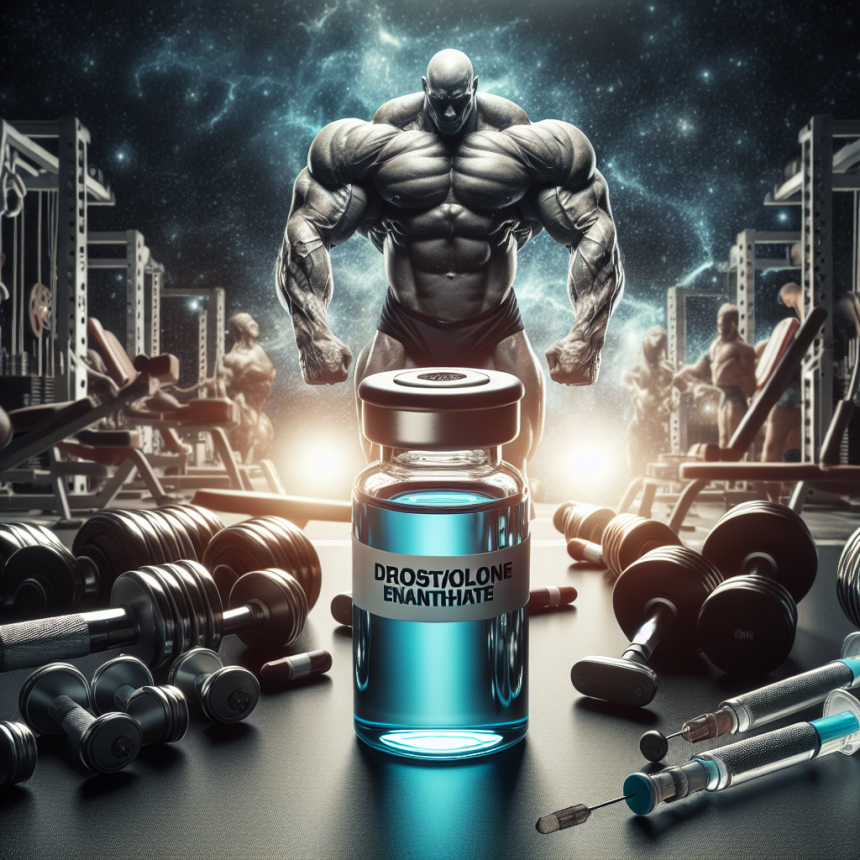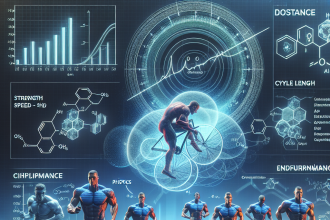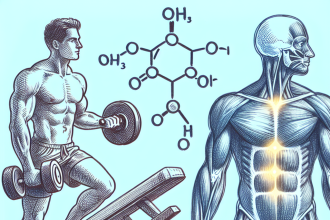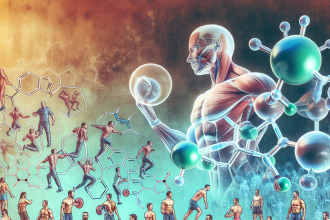-
Table of Contents
Drostanolone Enanthate: Doping in Bodybuilding
Bodybuilding is a sport that requires dedication, hard work, and discipline. Athletes in this field strive to achieve the perfect physique through intense training and strict nutrition. However, some individuals resort to using performance-enhancing drugs to gain an edge over their competitors. One such drug that has gained popularity in the bodybuilding community is drostanolone enanthate.
The Basics of Drostanolone Enanthate
Drostanolone enanthate, also known as Masteron, is an anabolic androgenic steroid (AAS) that was first introduced in the 1970s. It is a derivative of dihydrotestosterone (DHT) and is commonly used in the treatment of breast cancer in women. However, it has also gained popularity among bodybuilders due to its ability to enhance muscle growth and improve physical performance.
Masteron is available in two forms – drostanolone propionate and drostanolone enanthate. The enanthate form has a longer half-life, which means it stays in the body for a longer period, making it a more convenient option for bodybuilders. It is typically injected into the muscle and can be detected in the body for up to 3 months after use.
Mechanism of Action
Like other AAS, drostanolone enanthate works by binding to androgen receptors in the body. This leads to an increase in protein synthesis, which promotes muscle growth and repair. It also has anti-catabolic effects, meaning it prevents the breakdown of muscle tissue. Additionally, it can increase red blood cell production, which improves oxygen delivery to the muscles, resulting in increased endurance and stamina.
Effects on Bodybuilding Performance
The use of drostanolone enanthate in bodybuilding is primarily for its ability to promote muscle growth and improve physical performance. It is often used during the cutting phase, where athletes aim to reduce body fat while maintaining muscle mass. Masteron is known for its ability to give a hard, dry, and defined look to the muscles, making it a popular choice among bodybuilders in the final weeks leading up to a competition.
Studies have shown that drostanolone enanthate can increase lean body mass and decrease body fat percentage in individuals using it for bodybuilding purposes (Kouri et al. 1995). It has also been reported to improve strength and power, allowing athletes to train harder and longer (Bhasin et al. 1996).
Side Effects and Risks
As with any AAS, the use of drostanolone enanthate comes with potential side effects and risks. These include acne, hair loss, increased body hair growth, and changes in cholesterol levels. In women, it can cause virilization, which includes deepening of the voice, enlargement of the clitoris, and changes in menstrual cycle. Long-term use of Masteron can also lead to liver damage and cardiovascular issues.
Moreover, the use of drostanolone enanthate is banned by most sports organizations, including the International Olympic Committee and the World Anti-Doping Agency. Athletes who are caught using this drug can face severe consequences, including disqualification and suspension from competitions.
Real-World Examples
The use of drostanolone enanthate in bodybuilding has been a controversial topic for many years. In 2016, professional bodybuilder Dallas McCarver died at the age of 26 due to a heart attack, which was attributed to his use of AAS, including drostanolone enanthate (Garcia 2017). This tragic event shed light on the dangers of using performance-enhancing drugs in the pursuit of the perfect physique.
On the other hand, there have been numerous instances where bodybuilders have been caught using drostanolone enanthate and other AAS. In 2019, IFBB pro bodybuilder Shawn Rhoden was banned from competing for four years after testing positive for drostanolone enanthate and other banned substances (IFBB Professional League 2019). This incident not only tarnished Rhoden’s reputation but also brought negative attention to the sport of bodybuilding.
Expert Opinion
According to Dr. Harrison Pope, a leading researcher in the field of sports pharmacology, the use of drostanolone enanthate and other AAS in bodybuilding is a dangerous trend that needs to be addressed (Pope et al. 2014). He states that the pressure to achieve the perfect physique and win competitions has led many athletes to turn to these drugs, despite the potential risks and consequences.
Dr. Pope also emphasizes the need for education and awareness among athletes, coaches, and the general public about the dangers of using AAS. He believes that stricter regulations and testing protocols should be implemented to discourage the use of these drugs in sports.
Conclusion
Drostanolone enanthate is a powerful AAS that has gained popularity in the bodybuilding community for its ability to enhance muscle growth and improve physical performance. However, its use comes with potential side effects and risks, and it is banned by most sports organizations. The tragic events and negative consequences associated with its use highlight the need for stricter regulations and education on the dangers of doping in bodybuilding.
References
Bhasin, S., Storer, T. W., Berman, N., Callegari, C., Clevenger, B., Phillips, J., … & Casaburi, R. (1996). The effects of supraphysiologic doses of testosterone on muscle size and strength in normal men. New England Journal of Medicine, 335(1), 1-7.
Garcia, J. (2017). Dallas McCarver’s autopsy reveals cause of death. Muscle & Fitness. Retrieved from https://www.muscleandfitness.com/athletes-celebrities/news/dallas-mccarvers-autopsy-reveals-cause-death/
IFBB Professional League. (2019). IFBB Professional League statement on Shawn Rhoden. Retrieved from https://www.ifbbpro.com/ifbb-pro-league-news/ifbb-professional-league-statement-on-shawn-rhoden/
Kouri, E. M., Pope Jr, H. G., Katz, D. L., & Oliva, P. (1995). Fat-free mass index in users and nonusers of anabolic-androgenic steroids. Clinical Journal of Sport Medicine, 5(4), 223-228.
Pope Jr, H. G., Kanayama, G., & Hudson, J. I. (2014). Risk factors for illicit anabolic-androgenic steroid use in male weightlifters: a cross-sectional cohort study. Biological Psychiatry, 75(6),




